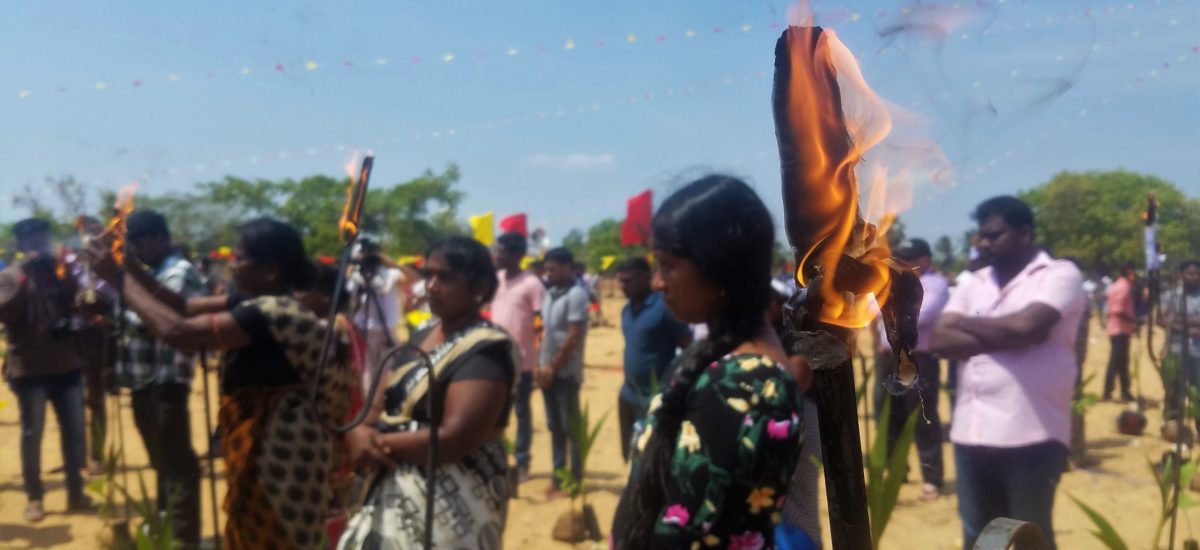The sun was scorching at the Mullivaikkal memorial grounds as people gathered to remember loved ones and Tamil civilians killed during the war that came to an end on May 18th 2009. Lines of lamps and young coconut plants were laid out in lines in the soft sand. Surviving family members, loved ones and members of the community stood next to them. Each placed flowers at the base of the lamp and stuck joss sticks into the sand next to photos of their lost loved ones.
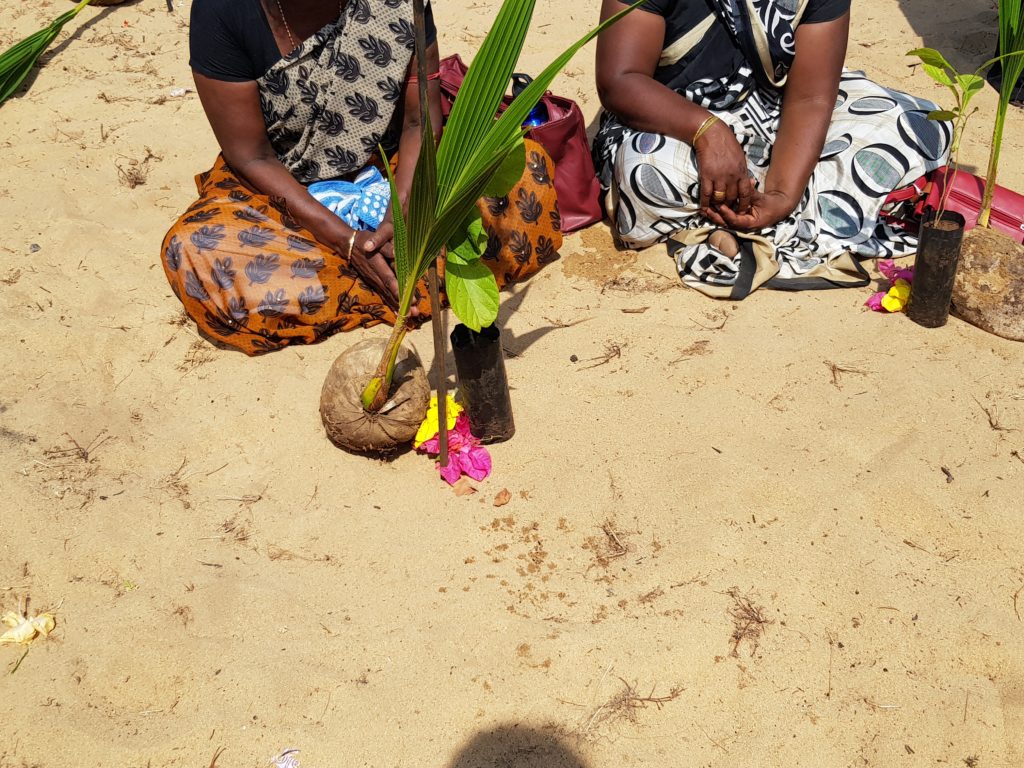
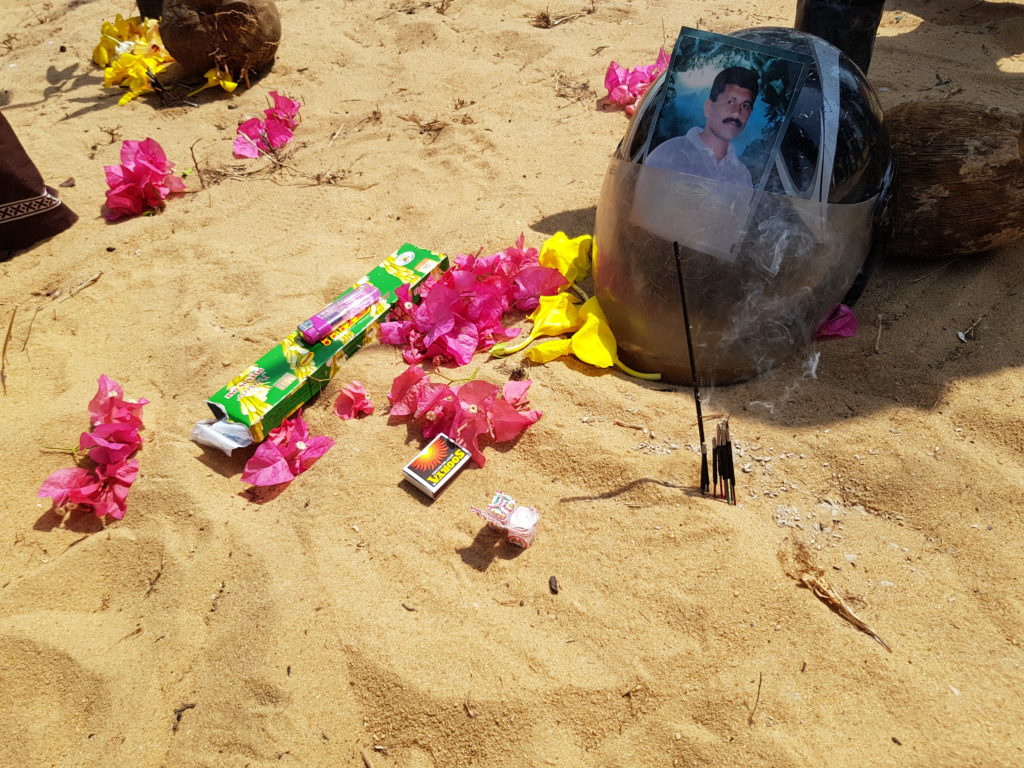
These memorial grounds are located squarely within what the Sri Lankan Army designated as the third and final No Fire Zone on the 8th of May 2009. In this map, they fall close to the point labelled Vellamullivaikkal. The No Fire Zone came under continuous fire from the Army, according to witnesses from within the area. This has been flatly denied by the government, though it has drawn condemnation from rights organisations internationally.
Google Earth imagery from the 24th of May 2009 shows several shelters – some still standing, and others destroyed – in this area.
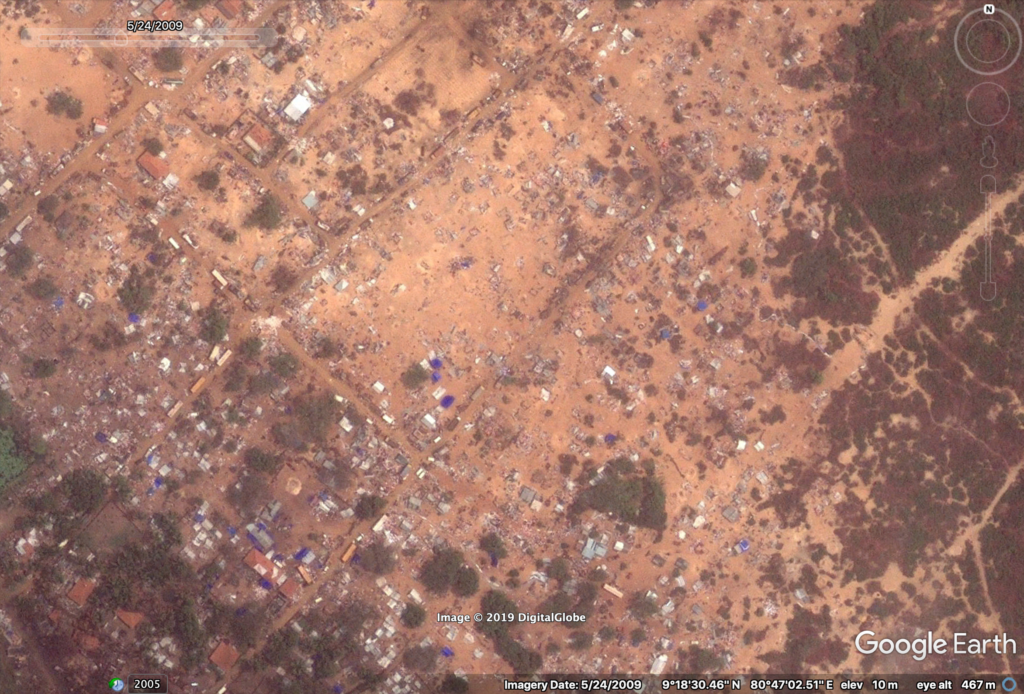
At 10.30am, each individual lights a lamp, in memory of the many lives lost during the fighting. The number of civilian casualties during the last stages remains uncertain. Official government statements put the toll at a mere 9000 while a report commission by then-UN Secretary General Ban Ki Moon record 40000 deaths. The Catholic Diocese of Mannar noted in 2011 that 146,679 people still remain unaccounted for.

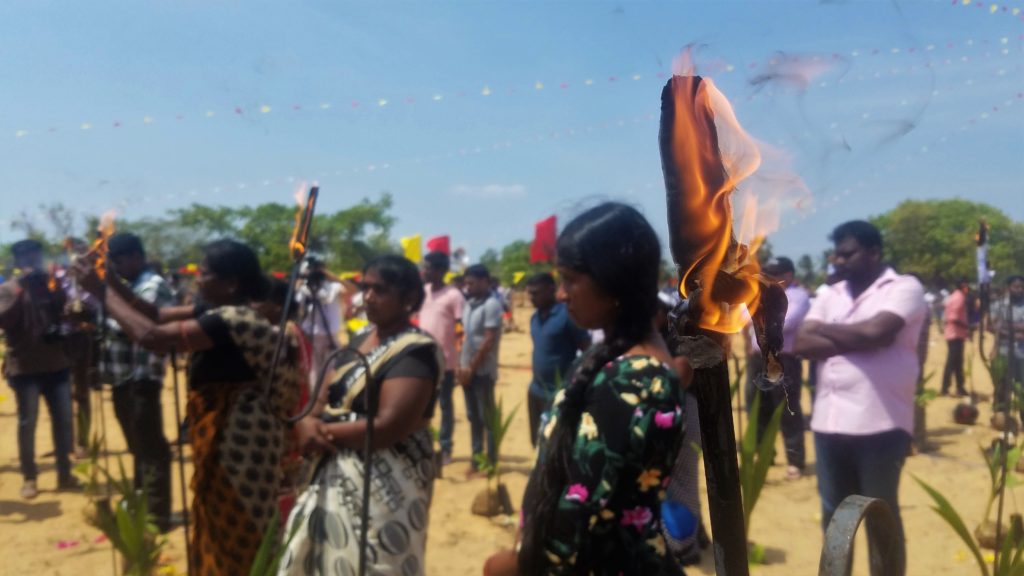
When the individual lamps are burning, a symbolic flame is lit on a memorial of two blood-stained hands rising towards the sky. The crowd in attendance then lines up to offer flowers and prayers at this plinth.

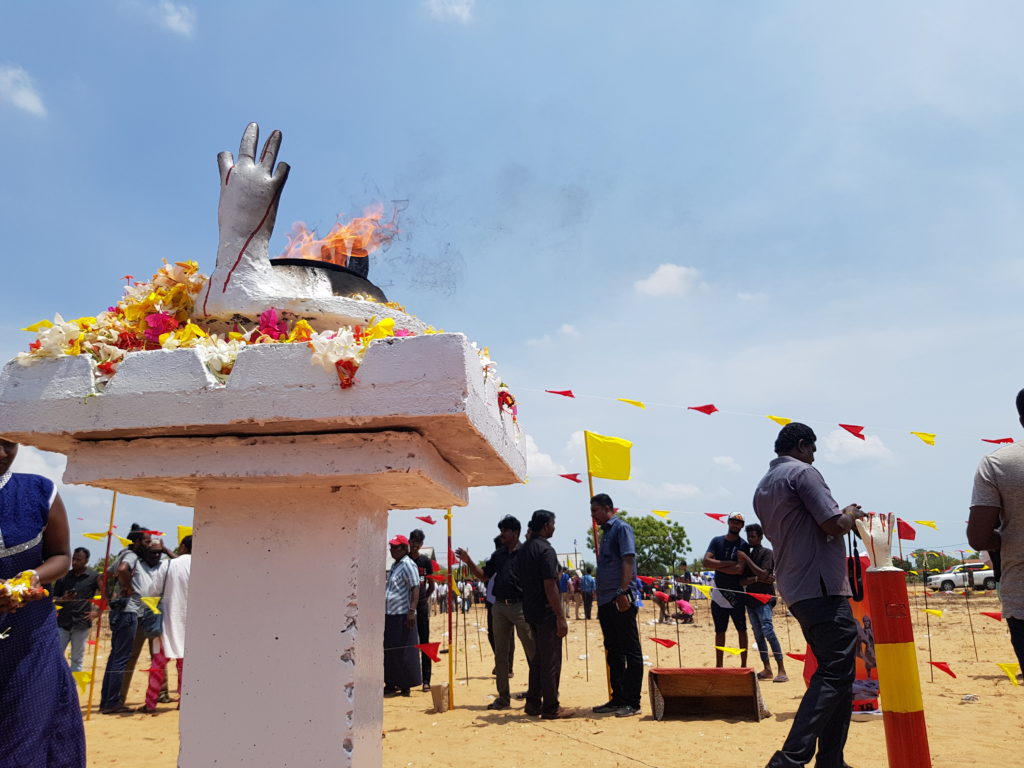
This memorial is one of two physical civilian memorials in the area. The other is located not far away, picturing a man carrying an injured woman, with a young child next to them. The surrounding region is dotted with several war monuments erected by the state, to glorify the ‘victory’ of the armed forces. The loss of civilian life during the war is not accounted for in any of these monuments.
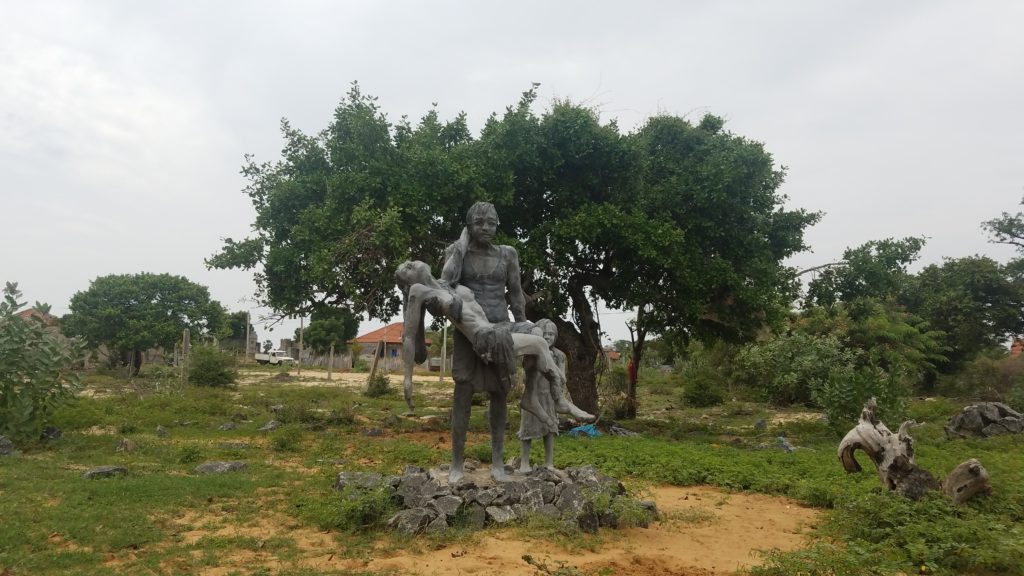
Individuals who were leaving after the memorial’s proceedings ended were met at the entrance by a small-open backed lorry, filled with large metal cooking vats. Young men spooned congee out of this and into plastic bags for the people to take home. It was also being distributed to individuals to be eaten at the site. ‘Mullivaikkal Congee’, a civil society initiative for the ten-year memorial, was meant to remember the staple diet of civilians trapped in the conflict area and No-Fire Zones at the end of the war. The dish made of rice, water and salt or sugar was cooked by civilians, or cooked and distributed to them by the LTTE, and the easiest thing to make while in such circumstances.

Tamil activists based in the Northern Province note that there was a drop in attendance between the memorials held last year and in this year; where in 2018 the crowd had run past the boundary of the grounds, roughly only a quarter attended this year, with lamps set up outnumbering the actual attendees.
A key reason for this, they note is the increased security presence in the Mullaitivu area. In the wake of the Easter Sunday Attacks, security was ramped up islandwide, with more police checkpoints on key routes. Between Anuradhapura town and the memorial grounds, one passes through eight checkpoints run by the Police and the military.
Speaking on community plans to hold memorials for the dead in the North and East, Army Commander Lieutenant General Mahesh Senanayake said that “it is their right to commemorate their loved ones, and we encourage them to hold such ceremonies” adding that prevailing Emergency Regulations will not affect commemorations.
In the 24 hours before the memorial was to take place, three new checkpoints were established in Valayanmadam, Mathalan, and at the southern end of the Vadduvakal bridge, that cuts through the Nandikadal lagoon. These are all key routes into Mullivaikkal. At the checkpoint at the Vadduvakal bridge, names and identity card numbers of all individuals passing through were being recorded.

Whether the police and army were intending to keep records of all those present at the memorial is unknown. However activists feel that these served as an intimidation tactic, deterring people from attending as they were afraid of the repercussions.
Civilian memorial activities have in the past been met with legal injunctions; authorities were concerned they were a threat to national security, having assumed that the memorial was for dead LTTE cadres. Civilians attending May 18th memorials have been called in for questioning.
While many would justify the presence of these checkpoints in the interest of national security, it is important to consider the context of the post-war North and how it differs from the increasing security presence in other parts of the country. A 2017 report by the Adayaalam Centre for Policy Research notes that;
‘Even at the lower end of the spectrum, a very conservative estimate of the Sri Lankan Army’s presence in Mullaitivu District is 60,000 personnel – 1 soldier for every 2 civilians – making it one of the most heavily militarised regions in the world. This presence is grossly disproportionate to the country as a whole – 25% of the Sri Lankan Army is deployed in a district comprising 0.6% of the Sri Lankan population.’
Militarisation in the Mullaitivu district in particular has remained high in the last ten years. Any additional military and security officials simply add to this already outsized presence in a vulnerable area.
May 18th is a day of mourning for the individuals who attended, the individuals who weren’t able to attend, and the Sri Lankan Tamil community across the globe. Community memorials, which were banned during the Rajapaksa regime, serve as important spaces both for grief and for community gathering. Their memorialisation of the civilians who passed away has been met with legal injunctions on the grounds that they were a threat to national security, with authorities mistakenly assuming they were commemorations of LTTE cadres killed in combat. This occurred without Emergency Regulations or a State of Emergency in place.

Ten years after the war came to an end, the security measures introduced in the last month have only served to put residents of the area, and indeed the entire Tamil community living in the North and East, under increased scrutiny.
Editor’s Note: Read ‘Victory over Remembrance: A day of division’ and ‘Memorialisation on May 18th: From Politicisation to Peoplisation‘
This story is the start of a series to mark ten years since of the war in Sri Lanka. More content, when it is published, can be found here.

